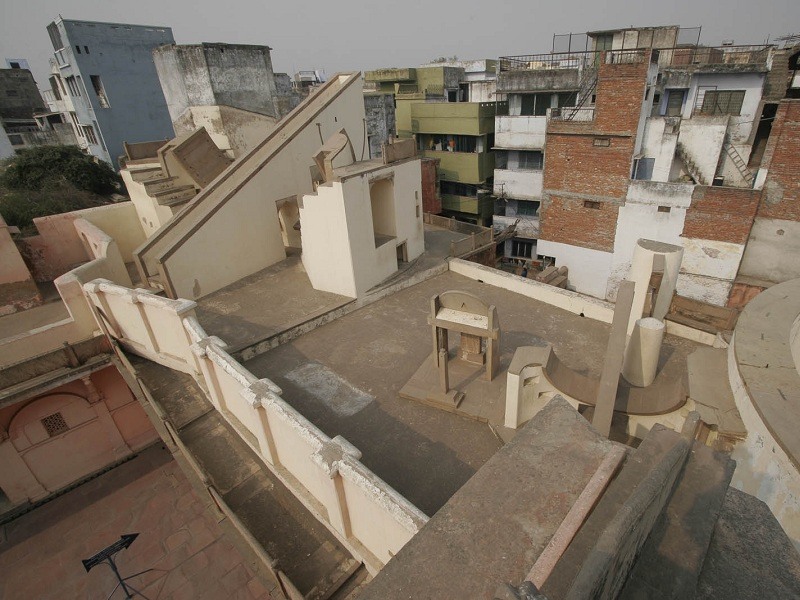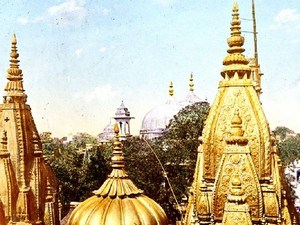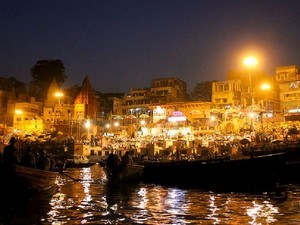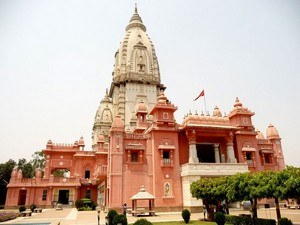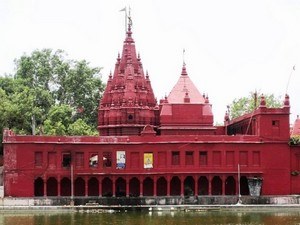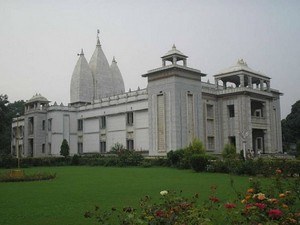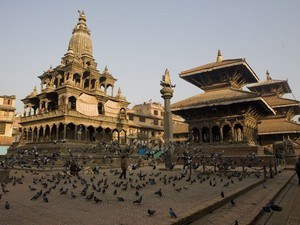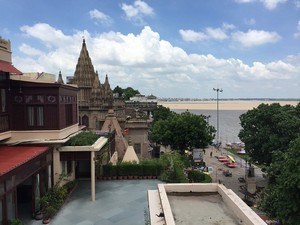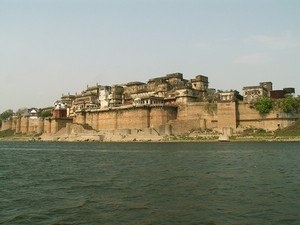Jantar Mantar / Man Singh Observatory, Varanasi - Timings, Entry Fee, History & Artifacts
Photo Credit: Flickr
 #21 of 30 Places to Visit in Varanasi
#21 of 30 Places to Visit in Varanasi
 Distance (From Varanasi Junction): 4 Kms
Distance (From Varanasi Junction): 4 Kms
 Trip Duration (Including Travel): 30 Mins
Trip Duration (Including Travel): 30 Mins
 Place Location: At Man Mandir Ghat
Place Location: At Man Mandir Ghat
 Transportation Options: Walk/Trek
Transportation Options: Walk/Trek
 Travel Tips: None
Travel Tips: None
About Jantar Mantar / Man Singh Observatory
At a distance of 500 m from Sri Kashi Vishwanath Temple and 4 Km from Varanasi Junction, Jantar Mantar is an observatory situated atop Man Mahal Palace near the famous Dasashwamedh Ghat in Varanasi of Uttar Pradesh. Also known as Man Singh Observatory, it is one of the popular places to visit as part of the Varanasi heritage tour packages. This observatory stands as a testament to the scholarly excellence of ancient India in the field of astronomy. The observatory is situated on the rooftop of the Man Mandir Palace, by the banks of the holy Ganges, providing a panoramic view of the river and the city.
History of Jantar Mantar / Man Singh Observatory
Maharaja Jai Singh II was also an astronomer, and possessed a profound interest in science and astronomy. In the early 18th century, he dispatched his scholars to various countries to study the design, construction, and technology of observatories, as well as the contemporary technological advancements. Upon their return, Jai Singh established five observatories in different locations - Delhi, Jaipur, Mathura, Varanasi, and Ujjain, between the years 1724 and 1737. The Man Singh Observatory in Varanasi is one of the five Jantar Mantars in India, constructed in 1737 by Maharaja Jai Singh II of the Kingdom of Amber.
Architecture of Jantar Mantar / Man Singh Observatory
Located at the Man Mandir Ghat, the Jantar Mantar is positioned on the rooftop of the Man Mandir Palace, adjacent to the banks of the sacred Ganges. Also referred to as Yantra Mandir, it was constructed to evaluate the precise time and altitude of the location, the declination of the Sun, stars, and planets, as well as to predict eclipses. It stands as one of the rare sites that exemplify the fusion of ancient astronomical knowledge and architectural prowess, providing fascinating insights into how scholars of the past monitored and studied celestial bodies without the aid of contemporary advanced technology.
The observatory contains numerous architectural astronomical instruments that were employed to forecast the time and movements of celestial entities. Among the notable Yantras are Disha Yantra, Dhruva Yantra, Digansha Yantra, Krantivritta Yantra, Prakash Yantra, Ram Yantra, and Samrat Yantra, which continue to be utilized for various calculations. These structures draw the attention of many astronomers, scholars, engineers, architects, and scientists, as well as travelers, due to their impeccable blend of geometric designs.
Dress Code & Other Restrictions of Jantar Mantar / Man Singh Observatory
Although Jantar Mantar does not enforce a formal dress code, it is advisable to dress modestly while walking and exploring the site. Men are encouraged to wear long trousers with shirts, while women should consider donning Sarees, Salwar Kameez, or other attire that adequately covers their shoulders and legs. It is recommended to avoid Western clothing such as shorts, skirts, and sleeveless tops.
Non-Hindus are permitted to enter the Jantar Mantar / Man Singh Observatory in Varanasi, irrespective of their religious affiliation, as it serves as a historical observatory rather than a religious site.
Jantar Mantar / Man Singh Observatory Timings
Monday: 6 AM - 5 PM
Tuesday: 6 AM - 5 PM
Wednesday: 6 AM - 5 PM
Thursday: 6 AM - 5 PM
Friday: 6 AM - 5 PM
Saturday: 6 AM - 5 PM
Sunday: 6 AM - 5 PM
Jantar Mantar / Man Singh Observatory Entry Fee
Entry is available for Rs. 25 for Indians & Rs. 300 for Foreigners
Best Time to Visit Jantar Mantar / Man Singh Observatory
The best time to visit Jantar Mantar in Varanasi is during the cooler months from October to March. This timeframe typically features pleasant weather, making it ideal for exploring the Man Singh Observatory without the oppressive heat or heavy rainfall that can characterize the summer and monsoon seasons. To enhance your experience, consider scheduling your visit at sunrise or sunset to appreciate a stunning view of the Ganges.
How to Reach Jantar Mantar / Man Singh Observatory
Lal Bahadur Shastri International Airport, Babatpur is the nearest airport which is about 23 Km from Varanasi Junction. Also known as Varanasi Airport, it is well connected with flights from New Delhi, Mumbai, Bangalore, Hyderabad, Kolkata and Gaya. Varanasi Junction railway station is well connected by trains with Chhapra, Kanpur, Amritsar, Muzzafarpur, Jammu, Ahmedabad, New Delhi, Kolkata, Hyderabad, Ranchi, Indore, Tatanagar, Chandigarh, Guwahati, Gorakhpur, Lucknow, Patna, Kochi, Jaisalmer, Mumbai, Bangalore, Dehradun, Haridwar, Pune and Chennai. Varanasi is well connected with buses from Agra, Delhi, Allahabad, Kanpur, Gorakhpur and Lucknow. One can reach Jantar Mantar / Man Singh Observatory by hiring a cab, or an auto-rickshaw from all parts of the city of Varanasi.



